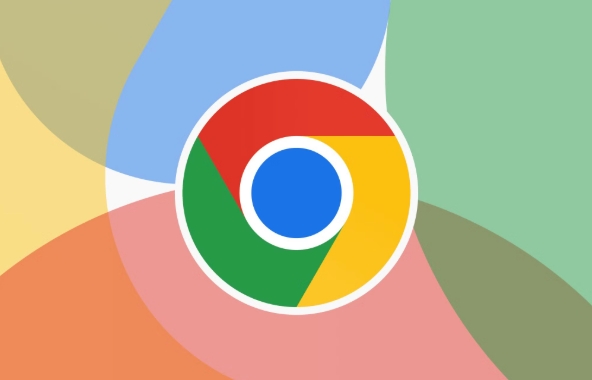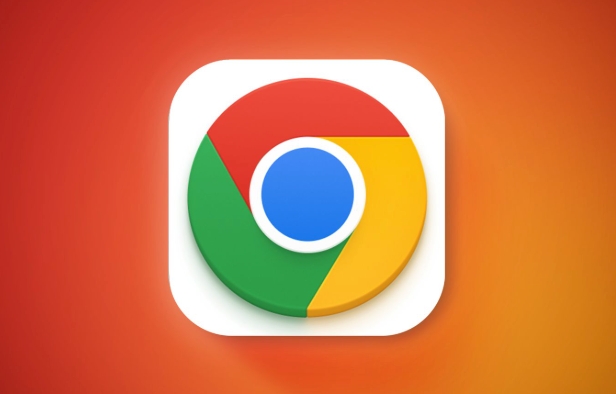How to use the task manager in Google Chrome?
Jul 30, 2025 am 01:24 AMOpen Chrome Task Manager by right-clicking the tab strip and selecting "Task Manager", pressing Shift Esc, or navigating to Chrome menu → More tools → Task Manager. 2. Identify resource-heavy processes by sorting columns like Memory footprint, CPU, and Network to see which tab, extension, or background process is using the most resources. 3. End problematic tasks by selecting the process and clicking "End Process", but be cautious as this may close tabs and result in loss of unsaved work. 4. Check for resource-consuming extensions by disabling them one by one to improve performance. 5. Reload high-usage tabs using F5 or Ctrl R to resolve temporary performance issues. 6. Use the Task Manager regularly to monitor background apps and make informed decisions about which tabs to close, avoiding unnecessary system strain. 7. Avoid ending critical system processes like "Browser" or "GPU Process" unless Chrome is unresponsive, as they are essential for stable operation. Chrome’s Task Manager is a powerful diagnostic tool that helps maintain smooth browsing by identifying and managing resource-heavy components effectively.

Google Chrome has a built-in Task Manager that lets you see how much memory, CPU, and GPU each tab, extension, or background process is using. If Chrome feels slow or unresponsive, the Task Manager can help you identify what’s causing the problem. Here's how to use it effectively.

How to Open Chrome’s Task Manager
Opening the Task Manager is simple:
- Right-click on the tab strip (the area at the top where your tabs are) and select "Task Manager".
- Or, press Shift Esc while Chrome is in focus.
- You can also go to the Chrome menu (three dots in the top-right) → More tools → Task Manager.
Once open, you’ll see a list of all running processes.

Understanding the Columns in Chrome Task Manager
The Task Manager shows several key performance metrics:
- Task: The name of the tab, extension, or background process.
- Memory footprint: How much RAM the process is using. High memory use can slow down your system.
- CPU: Current processor usage. A consistently high CPU usage (especially over 50–100%) may indicate a misbehaving tab or extension.
- Network: How much data the process is currently sending or receiving.
- Process ID: A unique identifier for the system (useful for advanced troubleshooting).
You can click any column header to sort by that value (e.g., click "Memory footprint" to see which tab uses the most RAM).

What to Do When a Process Is Using Too Many Resources
If you notice a tab or extension hogging CPU or memory:
-
Identify the problematic task:
- Look for unusually high CPU or memory usage.
- Background processes like "GPU Process" or "Browser" should usually be low; if not, something might be wrong.
-
End the task:
- Select the process in the Task Manager.
- Click End Process at the bottom.
- Warning: Ending a tab will close it and you may lose unsaved work.
-
Check for problematic extensions:
- Extensions often run in the background and can consume resources.
- Try disabling extensions one by one to see if performance improves.
-
Reload the tab:
- Sometimes a simple reload (F5 or Ctrl R) fixes high resource usage, especially on complex web apps like YouTube, Gmail, or Google Docs.
Tips for Using Chrome Task Manager Effectively
- Monitor regularly if Chrome feels slow – It helps catch issues early.
- Watch out for hidden background apps – Some websites (like chat apps or video conferencing tools) keep running even when minimized.
- Use it to decide which tabs to close – Instead of closing tabs randomly, close the ones using the most memory or CPU.
- Be cautious with system processes – Avoid ending "Browser" or "GPU Process" unless Chrome is frozen.
Basically, Chrome’s Task Manager is like a mini version of your computer’s system Task Manager but focused only on Chrome. It’s not flashy, but it’s powerful for diagnosing slowdowns. Once you know how to read it, you can keep Chrome running smoothly with just a few clicks.
The above is the detailed content of How to use the task manager in Google Chrome?. For more information, please follow other related articles on the PHP Chinese website!

Hot AI Tools

Undress AI Tool
Undress images for free

Undresser.AI Undress
AI-powered app for creating realistic nude photos

AI Clothes Remover
Online AI tool for removing clothes from photos.

Clothoff.io
AI clothes remover

Video Face Swap
Swap faces in any video effortlessly with our completely free AI face swap tool!

Hot Article

Hot Tools

Notepad++7.3.1
Easy-to-use and free code editor

SublimeText3 Chinese version
Chinese version, very easy to use

Zend Studio 13.0.1
Powerful PHP integrated development environment

Dreamweaver CS6
Visual web development tools

SublimeText3 Mac version
God-level code editing software (SublimeText3)

Hot Topics
 How to stop Chrome from updating in the background on Mac
Jul 21, 2025 am 12:41 AM
How to stop Chrome from updating in the background on Mac
Jul 21, 2025 am 12:41 AM
To prevent Chrome from automatically updating on Mac, it can be done by disabling update services, modifying permissions, and restricting network access. 1. Use terminal commands to disable the GoogleSoftwareUpdate daemon to prevent background updates; 2. Modify update directory permissions to prevent Chrome from starting the update process by itself; 3. Restrict Chrome's outbound network connection through system firewall or third-party tools to further eliminate update requests. Using these methods in combination can effectively prevent Chrome from being automatically updated.
 How to fix Chrome's spell checker not working
Jul 20, 2025 am 12:03 AM
How to fix Chrome's spell checker not working
Jul 20, 2025 am 12:03 AM
When Chrome spelling check fails, you can troubleshoot and fix it by following the following steps: 1. Confirm that the "Use Spelling Check" function is enabled and check whether the corresponding language is enabled in the language settings; 2. Adjust the input language order, delete the redundant language, and ensure that the main language enables spelling check; 3. Close possible conflicting extensions, especially syntax or translation plug-ins; 4. Update Chrome to the latest version and check the operating system updates. If it still doesn't work, try resetting Chrome settings.
 How to stop Chrome from automatically opening PDF files
Jul 21, 2025 am 12:09 AM
How to stop Chrome from automatically opening PDF files
Jul 21, 2025 am 12:09 AM
To let Chrome download directly instead of opening it when clicking on the PDF link, 1. Enter chrome://settings/content/pdfDocuments to check "DownloadPDFfilesinsteadofautomatically opening theminChrome"; 2. Check whether there are plug-ins such as Lightpdf or Smallpdf interfering behavior, you can try to disable the test; 3. You can use the developer tools to copy the link and paste the new tag to trigger the download. The above methods can be selected according to the situation.
 How to fix Chrome profile sync getting stuck in setup
Jul 25, 2025 am 01:10 AM
How to fix Chrome profile sync getting stuck in setup
Jul 25, 2025 am 01:10 AM
The problem of Chrome sync stuck can be solved through the following steps: 1. Check the network connection and Google account status to ensure normal access; 2. Log out and log in to the Chrome account again; 3. Clear the synchronized data and restart the browser; 4. Reset Chrome settings; 5. Try the traceless mode or new user profile. Sequentially checking can effectively restore the synchronization function.
 How to fix screen tearing when scrolling in Chrome
Jul 25, 2025 am 12:55 AM
How to fix screen tearing when scrolling in Chrome
Jul 25, 2025 am 12:55 AM
The screen tear occurs when the Chrome browser scrolls, which is usually caused by the out-of-synchronization of rendering and refresh. The solutions are as follows: 1. Ensure that hardware acceleration is enabled, you can manually check the settings and restart the browser; 2. Forcefully enable Compositor and related options to optimize rendering; 3. Check the display refresh rate, use single-screen testing, and enable VSync or adaptive synchronization technology on supported devices; 4. Update the graphics card driver or replace the display interface such as using the DP interface. It is recommended to start the troubleshooting with simple steps and gradually adjust to find the best configuration.
 Chrome keeps opening new tabs by itself
Jul 22, 2025 am 12:22 AM
Chrome keeps opening new tabs by itself
Jul 22, 2025 am 12:22 AM
The problem of Chrome automatically popping up new tabs is usually caused by malicious extensions, advertising scripts, or browser hijacking. The solutions are as follows: 1. Check and uninstall suspicious extensions, especially ad-class plug-ins; 2. Clear browser caches and cookies to eliminate data corruption; 3. Check whether the homepage and default search engine settings have been tampered with and manually corrected; 4. Use antivirus software such as WindowsDefender or Malwarebytes to scan and clear potential malware; 5. Finally, try resetting Chrome settings to restore the default configuration. Troubleshooting in this order can effectively solve most abnormal labeling problems.
 How to fix Chrome opening new windows instead of tabs
Jul 26, 2025 am 01:29 AM
How to fix Chrome opening new windows instead of tabs
Jul 26, 2025 am 01:29 AM
1. Check whether the shortcut attribute has additional parameters and delete it; 2. Clear cache and switch startup settings, or create new user information; 3. Extend the impact and disable the problem plug-in through traceless mode. Chrome pops up new windows instead of tabs usually due to exceptions in shortcut parameters, cache configuration conflicts, or third-party extension interference. Check and adjust the corresponding settings in turn to resolve.
 How to fix Chrome when it's not printing correctly
Jul 26, 2025 am 02:46 AM
How to fix Chrome when it's not printing correctly
Jul 26, 2025 am 02:46 AM
Chrome printing exceptions can be solved in the following ways: 1. Check the printer selection, paper size, orientation, zooming and background graphics settings in the print preview; 2. Try stealth mode to eliminate extended interference and clear cache; 3. Update or reinstall the printer driver, replace the general driver or use the "Print as PDF" method; 4. Finally, you can reset the Chrome settings to restore the default. Most problems can be solved through the first few steps. If they still fail, you can export PDF to print.






